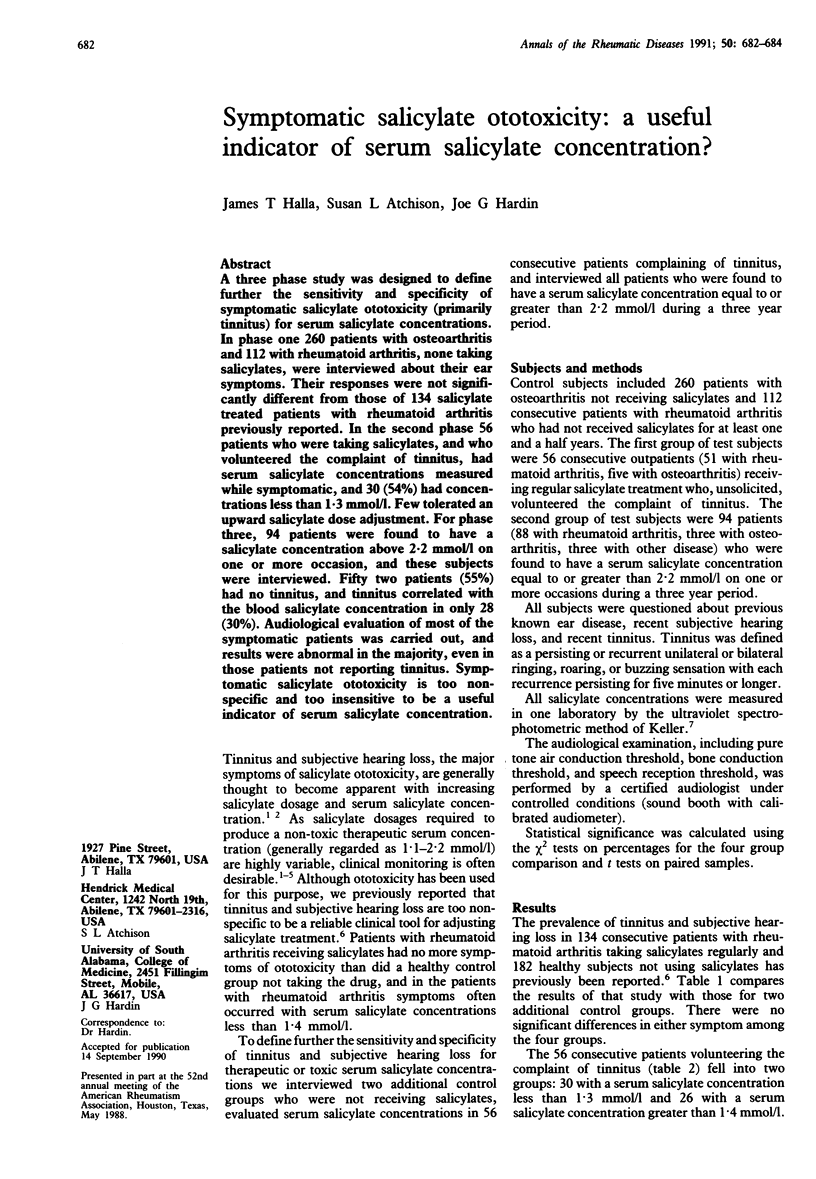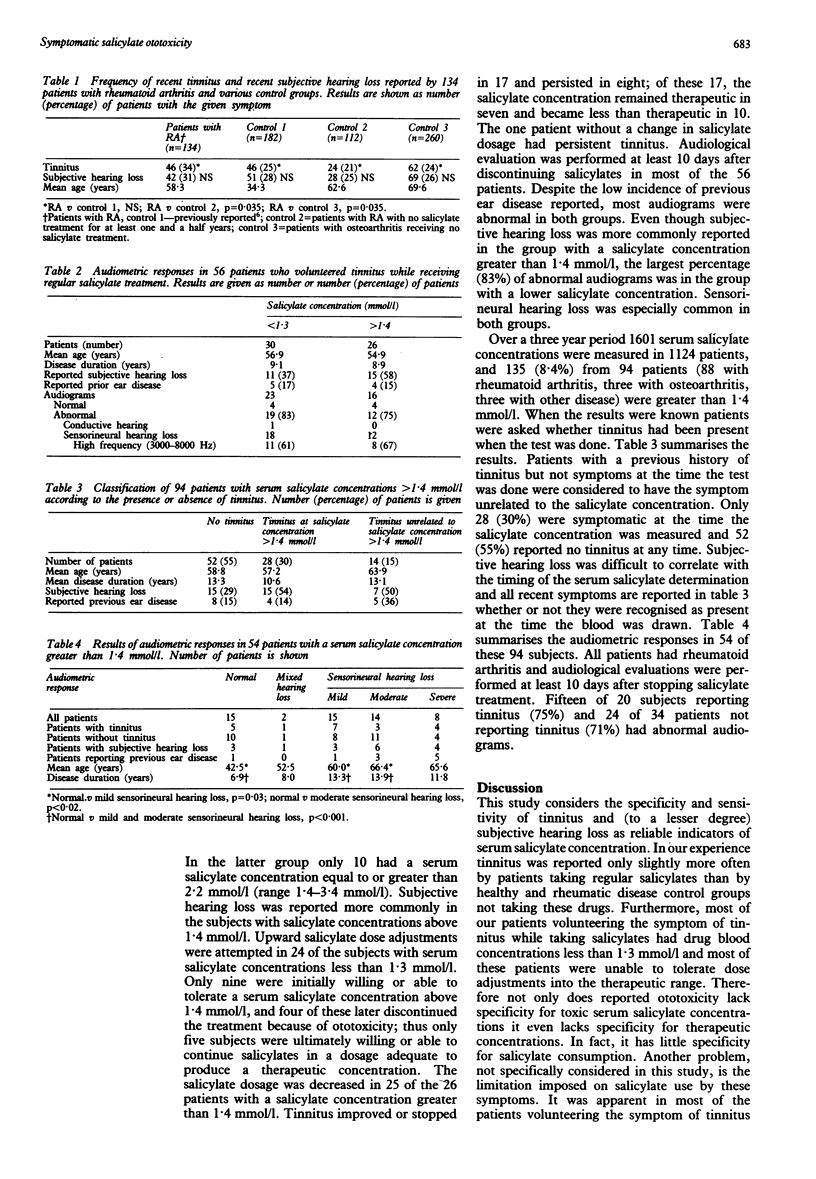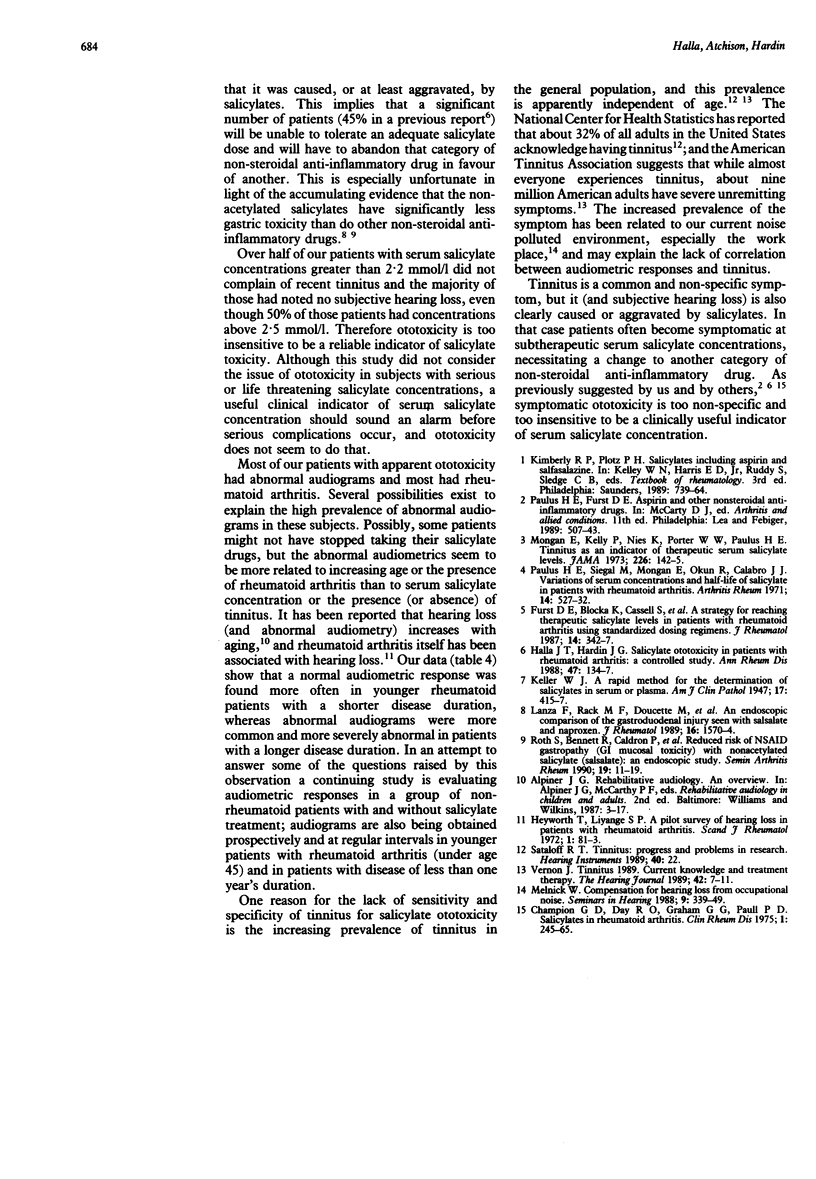Abstract
A three phase study was designed to define further the sensitivity and specificity of symptomatic salicylate ototoxicity (primarily tinnitus) for serum salicylate concentrations. In phase one 260 patients with osteoarthritis and 112 with rheumatoid arthritis, none taking salicylates, were interviewed about their ear symptoms. Their responses were not significantly different from those of 134 salicylate treated patients with rheumatoid arthritis previously reported. In the second phase 56 patients who were taking salicylates, and who volunteered the complaint of tinnitus, had serum salicylate concentrations measured while symptomatic, and 30 (54%) had concentrations less than 1.3 mmol/l. Few tolerated an upward salicylate dose adjustment. For phase three, 94 patients were found to have a salicylate concentration above 2.2 mmol/l on one or more occasion, and these subjects were interviewed. Fifty two patients (55%) had no tinnitus, and tinnitus correlated with the blood salicylate concentration in only 28 (30%). Audiological evaluation of most of the symptomatic patients was carried out, and results were abnormal in the majority, even in those patients not reporting tinnitus. Symptomatic salicylate ototoxicity is too nonspecific and too insensitive to be a useful indicator of serum salicylate concentration.
Full text
PDF


Selected References
These references are in PubMed. This may not be the complete list of references from this article.
- Furst D. E., Blocka K., Cassell S., Dromgoole S., Harris E. R., Hirschberg J. M., Josephson N., Rupp P. A., Paulus H. E., Trimble R. B. A strategy for reaching therapeutic salicylate levels in patients with rheumatoid arthritis using standardized dosing regimens. J Rheumatol. 1987 Apr;14(2):342–347. [PubMed] [Google Scholar]
- Halla J. T., Hardin J. G. Salicylate ototoxicity in patients with rheumatoid arthritis: a controlled study. Ann Rheum Dis. 1988 Feb;47(2):134–137. doi: 10.1136/ard.47.2.134. [DOI] [PMC free article] [PubMed] [Google Scholar]
- Heyworth T., Liyanage S. P. A pilot survey of hearing loss in patients with rheumatoid arthritis. Scand J Rheumatol. 1972;1(2):81–83. doi: 10.3109/03009747209103000. [DOI] [PubMed] [Google Scholar]
- Lanza F., Rack M. F., Doucette M., Ekholm B., Goldlust B., Wilson R. An endoscopic comparison of the gastroduodenal injury seen with salsalate and naproxen. J Rheumatol. 1989 Dec;16(12):1570–1574. [PubMed] [Google Scholar]
- Mongan E., Kelly P., Nies K., Porter W. W., Paulus H. E. Tinnitus as an indication of therapeutic serum salicylate levels. JAMA. 1973 Oct 8;226(2):142–145. [PubMed] [Google Scholar]
- Roth S., Bennett R., Caldron P., Hartman R., Mitchell C., Doucette M., Ekholm B., Goldlust B., Lee E., Wilson R. Reduced risk of NSAID gastropathy (GI mucosal toxicity) with nonacetylated salicylate (salsalate): an endoscopic study. Semin Arthritis Rheum. 1990 Feb;19(4 Suppl 2):11–19. [PubMed] [Google Scholar]


